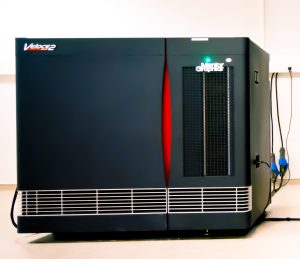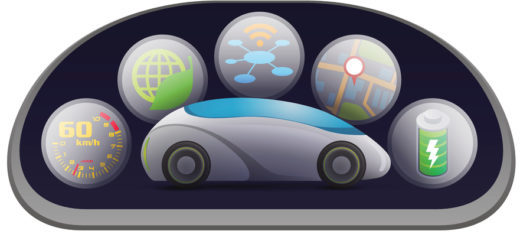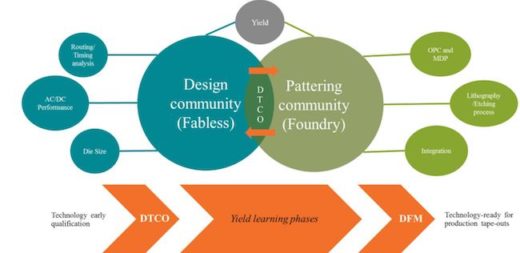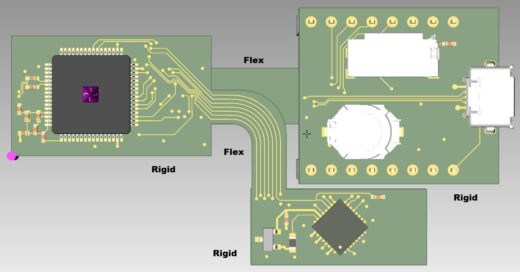Top Articles: Emulation Partnership, Autonomous Vehicles, DTCO, DVCon India, Multi-Board System Design
- Leti Offers Chip Start-ups Access to an Emulator with Mentor
- 5 Big Under-The-Hood Engineering Challenges in Building Autonomous Vehicles
- Your Next Node: Find Lithography Issues Early with DTCO
- Quick Chat with Ravi Subramanian: Keynote Speaker DVCon India 2017
- Collaborative Multi-Board System Design
Leti Offers Chip Start-ups Access to an Emulator with Mentor
Electronics Weekly
 Microelectronics research organization, Leti, will now offer European chipmakers access to its Mentor Veloce emulator. Veloce is a high-speed, multi-application tool for emulation of SoC designs that was installed at Leti’s Grenoble facility in 2013. This partnership provides optimized implementation within the emulator, debug, and analysis of results.
Microelectronics research organization, Leti, will now offer European chipmakers access to its Mentor Veloce emulator. Veloce is a high-speed, multi-application tool for emulation of SoC designs that was installed at Leti’s Grenoble facility in 2013. This partnership provides optimized implementation within the emulator, debug, and analysis of results.
5 Big Under-The-Hood Engineering Challenges in Building Autonomous Vehicles
Semiconductor Engineering
 By 2035, 25% of all cars will have partial or full autonomy, with total global sales growing from near-zero levels in 2015 to $42 billion in 2025 and ~ $77 billion by 2035. Puneet Sinha outlines 5 key autonomous vehicle engineering areas that require innovation, including: Vehicle sensor integration, zero-defect sensor fusion, ECU consolidation, electrical architecture and wire harness design and powertrain electrification.
By 2035, 25% of all cars will have partial or full autonomy, with total global sales growing from near-zero levels in 2015 to $42 billion in 2025 and ~ $77 billion by 2035. Puneet Sinha outlines 5 key autonomous vehicle engineering areas that require innovation, including: Vehicle sensor integration, zero-defect sensor fusion, ECU consolidation, electrical architecture and wire harness design and powertrain electrification.
Your Next Node: Find Lithography Issues Early with DTCO
Tech Design Forum
 Pattern-based design/technology co-optimization (DTCO) estimates lithographic difficulty during the early stages of a new process technology node. With DTCO flows, designers can achieve early predictions of potential problems before DFM kits are developed and can establish a bi-directional platform for interaction between design and manufacturing communities.
Pattern-based design/technology co-optimization (DTCO) estimates lithographic difficulty during the early stages of a new process technology node. With DTCO flows, designers can achieve early predictions of potential problems before DFM kits are developed and can establish a bi-directional platform for interaction between design and manufacturing communities.
Quick Chat with Ravi Subramanian: Keynote Speaker DVCon India 2017
Siddhakarana
At DVCon India, Ravi Subramanian will deliver a keynote on driving the next big wave in verification which dives into the convergence of different technologies and the impact on verification. In this Q&A with Ravi, he discusses his upcoming keynote as well as his thoughts on today’s verification trends.
Collaborative Multi-Board System Design
Semiconductor Engineering
 Designing electronic systems that comprise multiple interacting PCBs, connectors, and cables requires multi-discipline team collaboration to effectively manage design complexity for optimum product performance and reliability. Now, hardware design – from multi-board system specification to completed PCBs and cables – can be handled with one integrated collaborative flow.
Designing electronic systems that comprise multiple interacting PCBs, connectors, and cables requires multi-discipline team collaboration to effectively manage design complexity for optimum product performance and reliability. Now, hardware design – from multi-board system specification to completed PCBs and cables – can be handled with one integrated collaborative flow.